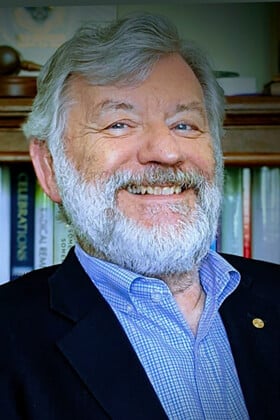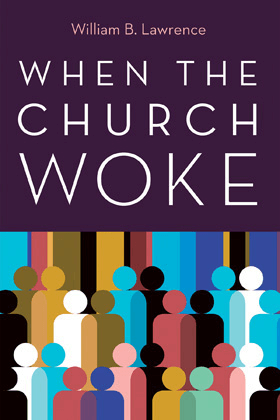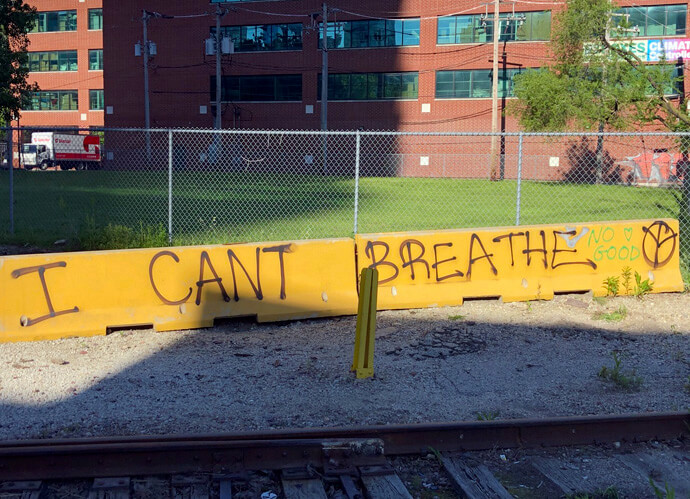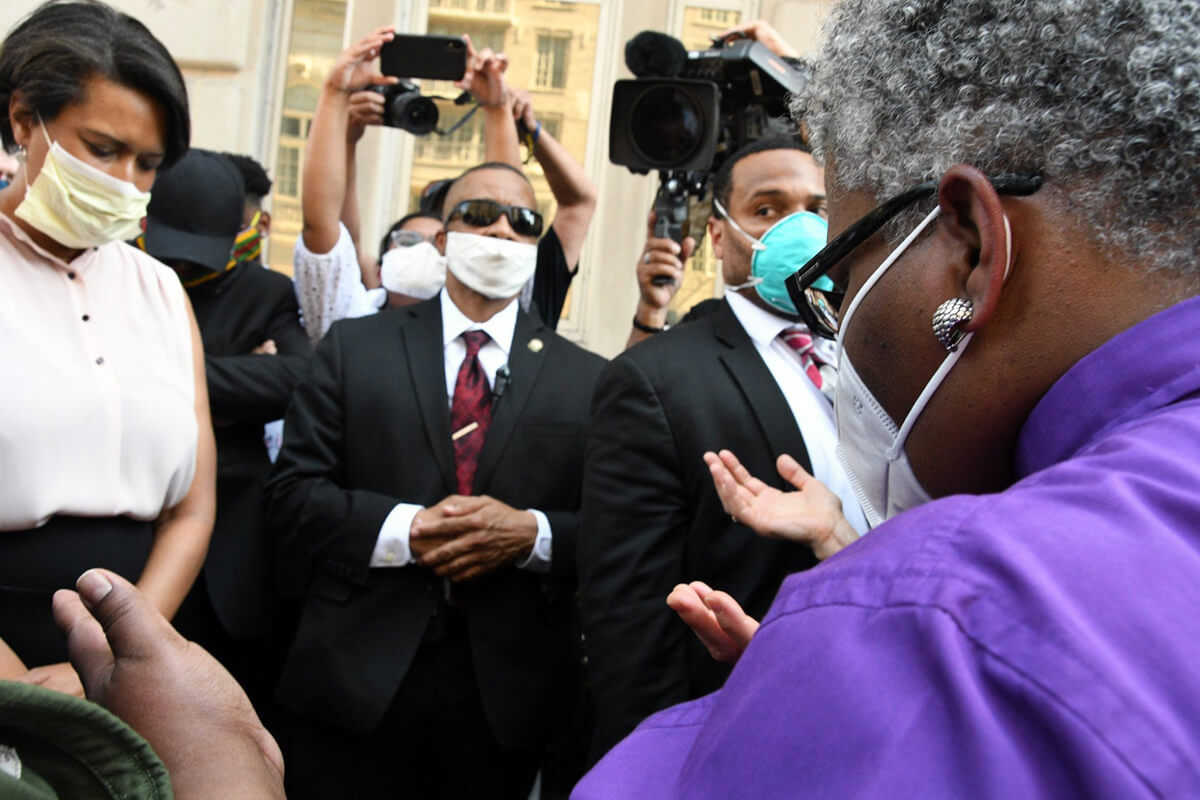Key points:
- The Rev. Dr. William B. Lawrence is a United Methodist clergyman and church historian.
- Though retired, he is still busy writing, and his latest book is “When the Church Woke.”
- Lawrence argues that The United Methodist Church needs to go much further in grappling with and atoning for the racism in its history.
The Rev. Dr. William B. Lawrence has had a range of roles in The United Methodist Church: pastor, district superintendent, seminary professor, theological school dean, General Conference delegate, president of the Judicial Council. He is, by academic training, a historian of the church. Though retired, he’s busy with various writing projects. His new book, “When the Church Woke,” is about racism within Methodism, past and present.
Lawrence answered questions from UM News’ Sam Hodges.
Why this book?
Multiple forces led me to write “When the Church Woke.” One was watching The United Methodist Church tear itself apart in disputes about human sexuality with claims about Wesleyan doctrine and Methodist discipline that are inaccurate and misleading presentations of Wesleyan theology and Methodist history.
Another is the failure to know, or refusal to learn, that racism and white supremacism have been factors in American Methodism from our founding years in the 18th century to our local church life in the present day. And another is the unwillingness of our leaders in connectional United Methodism to recognize that a thorough, systemic confrontation with racism in the church and the society should be a prophetic and pastoral priority if we are faithful to the gospel of Jesus Christ.
The term “woke” is embraced by many Americans and reviled by many others. Why is “woke” positive and important to you — and why should the church aspire to wokeness?

Photo by Todd W. Lawrence.
First, the concept of being awakened or woke is biblical. People had spiritual encounters with the Lord or with messengers of the Lord and acted faithfully when they woke. In the Gospel of Matthew, Joseph had a visit from an angel. In the Gospel of Luke, Mary had a visit from an angel. When they woke from those encounters, they took action that was faithful to the visions.
Second, the controversies surrounding “woke” are illustrative of the racism and white supremacy that bedevil us. Grammatically, “woke” is a verb form. We say that someone “woke from a dream,” for example. In the second half of the 20th century, some Black artists (writers and musicians) began using the verb form as a predicate adjective in phrases such as “he woke me, and I stay woke.”
Third, critics and opponents of Black artists and political activists began using it as an adjective, claiming that history should not take seriously the facts of American slavery and segregation as Black people know them. Some political figures found that “woke,” used as an adjective, could be expanded as a label for ideas, groups or persons they opposed. They made “woke” a pejorative code for any racially, ethnically or theologically different group they could target.
Fourth, this pejorative code has now infected the church. As I say in “When the Church Woke,” a delegate to the Southern Baptist Convention said the church needs to be awakened not woke.
Fifth, when I submitted a draft of this book to a publisher with whom I had a contract, I was told that the word “woke” was too controversial. Indeed, I was asked to change the title. Happily, I was released from that contract. And now “When the Church Woke” has been published by Wipf & Stock. My editor there made clear that his company had no problem with “woke” in the title or text.
Probably many United Methodists know about their denomination’s split over slavery. But racism played out in many other ways. What’s an example that might surprise a reasonably well-informed United Methodist?
Several years ago, I was invited to a meeting of a prominent United Methodist program agency, whose members were working on a plan to restructure the denomination. At a breakfast session, I was asked to offer guidance to the group about elements in our history and polity that should be considered seriously in any denominational reorganization. While I reviewed some of our history, I referred to the “Central Jurisdiction.” A group member asked, “What’s that?”
The Central Jurisdiction was a deliberately created constitutional device for imposing racial segregation and white supremacy in The Methodist Church. It existed from 1939 until 1968, at which point The Methodist Church and the Evangelical United Brethren merged to form The United Methodist Church and eliminated the Central Jurisdiction.
But in its creation, The United Methodist Church retained the jurisdictional system. It had been devised in a massive structural change that occurred in 1939 as part of the compromises reached to achieve the “reunion” of three Methodist denominations, which had separated in the 19th century over slavery.

Before the “reunion” of The Methodist Protestant Church, The Methodist Episcopal Church and The Methodist Episcopal Church South in 1939, the term “jurisdiction” did not exist in the governing structures of Methodist denominations. In the negotiations that culminated in a 1939 reunion of these three bodies as The Methodist Church, six “jurisdictional conferences” were included in a new constitution. Five were defined by geographical regions in the United States (Northeast, Southeast, North Central, South Central and Western). The sixth (Central) was defined by race. The five regional jurisdictions were white jurisdictions, containing white (or overwhelmingly white) annual conferences, clergy and congregations. The sixth, a “Central Jurisdiction,” was specifically for Black persons in Black annual conferences with Black clergy and Black congregations.
The new constitution assigned two important responsibilities to the jurisdictional conferences. One was setting annual conference boundaries. The other was electing bishops.
So, the Northeastern Jurisdictional Conference could define boundaries of a Baltimore Annual Conference consisting of white congregations and clergy, while the Central Jurisdiction could define the boundaries of a Washington Conference consisting of Black congregations and clergy. As a result, there could be local churches worshipping in neighboring buildings that belonged to the same denomination but affiliated with separate annual conferences, supervised by separate bishops, and led by pastors who were appointed from separate cohorts of clergy, by authority of separate cabinets, all of which were identified and segregated by race.
Furthermore, the way that jurisdictional conference boundaries were crafted in the constitution guaranteed that The Methodist Church was organized according to social, cultural and legal systems of racial segregation and white supremacy. Black clergy would be elected as bishops but only to oversee Black conferences, clergy and congregations.
For a long time, The United Methodist Church has financially supported historically Black colleges. The denomination has a General Commission on Religion and Race. The Council of Bishops and some annual conferences have made anti-racism an emphasis. For anyone who would point to such efforts as evidence The United Methodist Church deserves high marks for racial reconciliation, what would you say?
All of those initiatives are relevant matters that merit recognition. But it is important to keep in mind that Black colleges were created by our church as well as by the American society because Methodism was complicit in the racial segregation and white supremacy that controlled the land. Black students could not enroll in Southern Methodist University or Emory University or Duke University until the 1950s or 1960s. Black scholars were not hired as faculty members at such institutions until the second half of the 20th century.
The Commission on Religion and Race was formed in 1968, after the assassination of Dr. King, in recognition of our failures to be a fully inclusive church but without evidence of our commitment to be a fully inclusive church. And none of these efforts by the General Conference or the Council of Bishops has penetrated the entire connectional system of The United Methodist Church. We give voice to anti-racist messages. But we have no church law that allows anyone to be brought up on charges if they participate in racist actions.
And we have never committed ourselves, system-wide, to the desegregation of congregations in The United Methodist Church.

The time a Minneapolis police officer spent choking George Floyd to death has been updated by authorities to have been 9 minutes and 23 seconds. But it was first reported as 8 minutes and 46 seconds, and it’s that length that sticks in the public memory. With the Floyd killing in mind, you came up with the idea for an 8:46 Lectionary, featuring the three biblical texts that are from a chapter 8 and a verse 46. What are they, and what might study of them offer the church?
Those three places in Scripture are I Kings 8:46, Luke 8:46 and John 8:46. The one in I Kings is a portion of Solomon’s prayer during the dedication of the Temple, emphasizing repentance and reconciliation after a time of hate-filled separation. The one in Luke is a double miracle story in which Jesus brings power to people — one in a lofty position in religion and society, the other in a lowly position in religion and society — who are experiencing different types of powerlessness. The one in John is a debate in which Jesus argued that the insights of reason and of intellectual thought are vital for faith that witnesses to truth, against evil and in providing freedom.
A churchwide Bible study of those three texts and sermons on those three lections could become a transformative series on themes of repentance and reconciliation that empower people of faith to confront evil with God’s liberating grace.
Your book is forthright about the history of racism within Methodism. But you also offer inspiring stories of Methodists confronting racism. Briefly describe the events involving the Rev. Rob Spencer at a United Methodist church in Paris, Texas.
For me, “When the Church Woke” is not only about Methodist history but also about Methodist theology and doctrine. That includes the theology of the church and the doctrine known as “eschatology.” For many Christians, that word refers to the end times.
But that is too limited an understanding. It also refers to God’s intrusion into our world. Most importantly, it refers to God’s judgment — an often neglected or overlooked facet of our being redeemed by the Lord.
To be redeemed from sin is to experience a judgment upon forms of sinfulness. If what is wrong with us is not judged, then we cannot acknowledge why we must be delivered from it. Racism and white supremacy must be condemned. We cannot be free from them without being judged for them. But, through God’s judgment, we can hope for something beyond them.

One of the things I express in the book is the link between the theology of the church and the gift of hope because of this eschatological perspective. Judged by the Lord and redeemed by the Lord, we can embrace hope by living in the loving promises of the Lord.
Or, as I say it in a single sentence, “The life to come comes to life in the church.”
That is what Rob Spencer enabled his congregation to recognize. While preparing a sermon for a centennial celebration, he discovered data about past lynching in the community and the church’s complicity in such atrocities. In “When the Church Woke,” I describe the events that unfolded from Spencer’s discovery that church and community needed to be judged for their tolerance of, and complicity in, a lynching of two men. At a local ceremony, descendants of the perpetrators and the victims participated in judging, repenting, reconciling and hoping that the life to come could come to life in the church.
Finally, and this borrows from The New York Times’ approach to wrapping up author interviews, persuade someone to read “When the Church Woke” in 50 words or less.
“When the Church Woke”is a book about the truth of America’s religious history and Methodist theology. Jesus said, “the truth will make you free.” “When the Church Woke” offers truth and hope for the life to come, which comes to life in the church.
Hodges is a Dallas-based writer for United Methodist News. Contact him at 615-742-5470 or [email protected]. To read more United Methodist news, subscribe to the free Daily or Weekly Digests.




